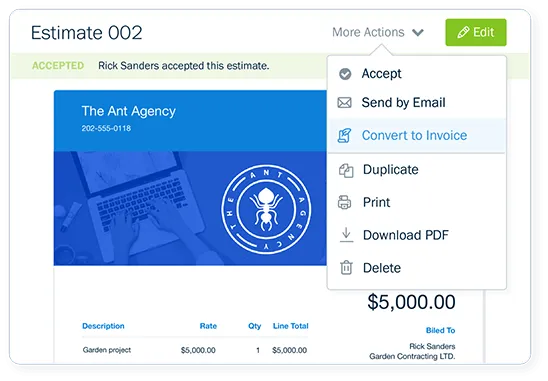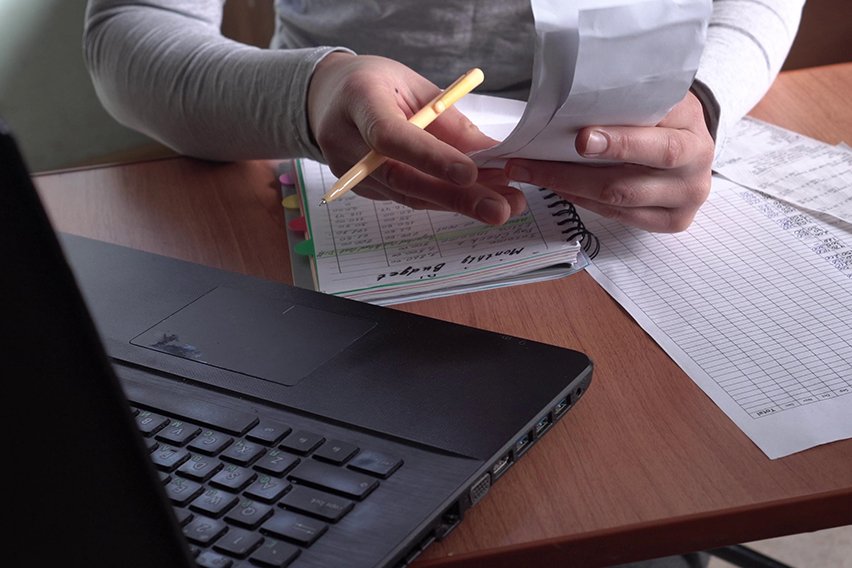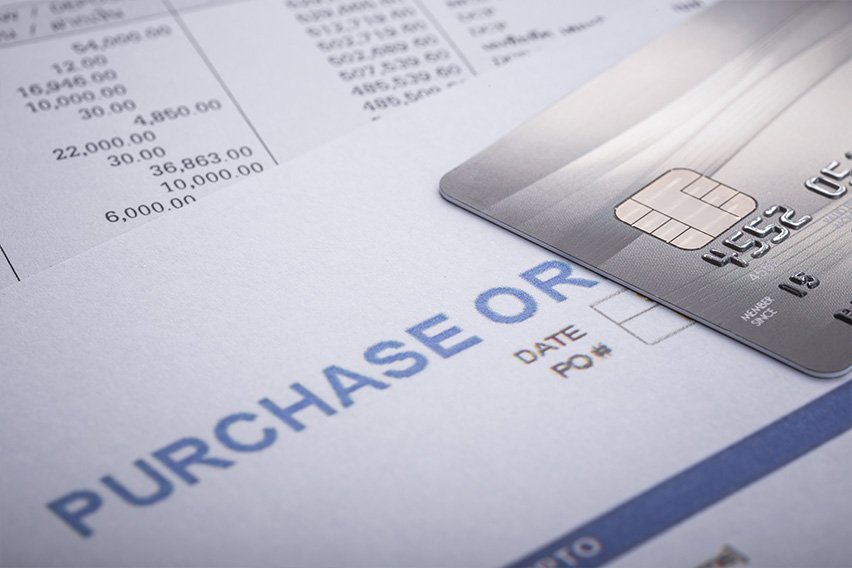How to Estimate Painting Jobs in 7 Easy Steps

Have you just started your own painting business in the United Kingdom? How exciting! You’ve been putting together everything you need to get started but now you might be wondering how to estimate painting jobs.
The good news is you have come to the right place.
Estimating painting jobs can be a challenge when you’re just getting started. It can be tough to balance between pricing low enough that you land the job but pricing high enough that your business earns a profit.
Understanding what needs to get included in an estimate will help make sure you can showcase your services and stay competitive. We have put together a seven-step guide that you can use to create the most accurate estimate to provide clients. It will break down everything from how to calculate labour cost and supplies, including overhead, and applying your markup.
FreshBooks has online estimating software that you can use to help make the process a little easier and a lot smoother. Before you know it, you’ll be quickly generating paint job estimates and converting them to invoices to send to clients.
Key Takeaways
- Providing an accurate estimate is key to winning clients and building your painting business.
- The first step to estimating is to visit the job site so you can assess the scope of a painting job.
- Your estimate should include labour costs, materials, overhead, profit margin, and a contingency.
- Several factors, including location, will affect the average cost of painting jobs.
- FreshBooks estimating software lets you create comprehensive painting estimates and convert them to invoices.
In this article, we’ll cover:
7 Actionable Steps to Follow for Estimating a Painting Job
What Does a Painter Usually Charge Per Hour?
What Do Painters Charge Per Square Metre?
7 Actionable Steps to Follow for Estimating a Painting Job
Here are seven steps that you can use when calculating how to price a painting job. They cover paint costs, supply costs, labour cost and everything else you will need to include. You’ll be able to provide a competitive estimate to your customers while keeping a healthy profit margin for your business.
1. Visit the Job Site
This is step one for a reason. Visiting the job site before doing anything else is a good starting point to ensure you create an accurate estimate. You’ll have a much better sense as to what the job will include and be able to ask the customer any relevant questions.
Seeing the job first lets you understand the amount of prep work needed, the number of labourers needed and you will have a better understanding of any possible issues that could arise. Plus, you can find out if the customer has any specific colours in mind and you can measure the space.
Bring a tape measure or a laser measurer with you to determine how many square metres you will need to cover. This will help when moving on to the next few steps.
2. How Much is Paint Going to Cost?
Now that you have visited the job site and have a better understanding of what’s needed, you can start to estimate how much paint will cost. It’s important to remember that the quality of paint, whether its an exterior or interior paint job, and even the colour, will increase the total price.
Basic paints can range in price from £8 to £40 per litre, depending upon the brand and type of paint you choose. And if you need to include primer it can cost from £12 to £25 per litre.
Choosing the right paint is important to make sure you’re able to stay within budget. If you can, try and discuss these specific details with the customer when you visit the site.
But, now that you took the proper measurements in step 1, you can start to create an accurate estimate of paint costs. For example, let’s say that the paint you purchase costs £20 per litre. Here are a few rough estimates for some different-sized houses in the UK:
- 140 square metre house: 10 litres of paint = £200
- 230 square metre house: 15 litres of paint = £300
- 370 square metre house: 25 litres of paint = £500
3. Estimate the Cost of Supplies and Materials
It can be common to have extra supplies and materials depending on the type of paint job you’re doing. Some jobs might require more painting materials and some jobs might require less, but here are a few things that you might expect to include in your estimate:
- Primer
- Caulking
- Painters tape
- Plastic
- Drop sheets
- Paint rollers
- Paint brushes
You can expect to have extra supplies for an exterior paint job since they can often be more difficult jobs. You might have extra prep work, there could be a large roofline or you might need to paint over a brick exterior.
4. How Much Will Labour Cost?
Smaller jobs won’t require as much labour but bigger jobs might, depending on the type of job. Either way, accurately accounting for the labour costs is an important part of your estimate. According to Quote Advisor, labour will typically cost around £30 per hour for painting jobs.
As an example, let’s say that you’re going to be painting a two-bedroom flat and have estimated that it will take roughly two days to complete, or 16 total working hours. You have also determined that you’ll need two workers to complete the job. Here’s a simple way to calculate labour costs:
16 working hours x £30 per hour = £480
2 workers x £480 = £960 in labour costs
While this is a basic way to determine labour costs, it’s important to make a note of any potential disruptions or extra work when you first visit the site and incorporate them into the cost estimate too. Sometimes they can add to the job taking longer, such as extra prep work.
5. Include Your Overhead Costs
Overhead costs are anything that isn’t directly related to the job itself. For example, think about things like the rent you pay if you have an office, insurance costs, uniform costs and fuel as overhead.
Since these are important elements to your business and enable you to provide the services you do, it’s important to account for them so your business continues to earn a profit. A good rule is adding around 12 per cent to your labour costs to cover your overhead.

6. Apply Your Business Markup
Your final step in how to price painting jobs in the UK is to apply your business markup. The amount that you include as your business markup can depend on your overall experience. A more experienced professional painter or larger business, for example, can have a higher percentage markup—often around 50%, according to Painting Business Pro.
But, if you’re just starting your painting business then a 30% margin would be expected. Here’s a simple way to calculate your desired profit margin:
Take your fixed costs (labour and materials) and calculate the total. For this example, let’s say this comes out to £1,000. Now take 30% and turn it into a decimal (0.3), and subtract that from 1 to get 0.7. Divide your fixed costs by 0.7 to get the total you should charge to achieve a 30% profit margin:
£1,000 / 0.7 = £1,429.
So your fixed costs + 30% profit margin comes to a total of £1,429. Then add in any additional costs like overhead for your business equipment for your final total.
7. Calculate the Final Estimate
Following steps one to six has allowed you to put together all of the relevant labour costs you needed to provide a painting cost estimate. Now, all you need to do is put everything together and make the final calculations. You’re going to include:
- The cost of paint and other supplies
- The cost of labour, taking into account circumstances that might increase the time a job can take
- Your overhead costs
- Your business markup percentage
You can now provide an accurate estimate to your customer and have a better chance of landing more painting jobs. You’ll be able to provide the services your customer wants, stay competitive and have your business earn a profit at the same time.
Ready to make your painting estimates process easier? FreshBooks estimates software lets you generate clear, professional estimates and proposals so you can price fairly and competitively. Find all the sections you need to break down your painting estimate into details, then convert your estimates into invoices once the job is complete.

What Does a Painter Usually Charge Per Hour?
Understanding what to charge per hour will help set the foundation for your painting job estimate. That said, there are a few factors that can cause the hourly rate to be higher or lower such as location. For example, a painter in Newcastle might charge between £10-15 per hour, but a painter in London might charge £40-48 per hour, according to HomeHow.
Some other factors that can change the price per hour can include:
- The size of a room
- The height of the ceilings
- The condition of the walls
- If there are intricate and precision details in the painting job

What Do Painters Charge Per Square Metre?
According to Quote Advisor, painting an interior wall that’s around 15 metres squared can range from £200 to £270 total, or £13 to £18 per square metre. An interior wall that’s 60 square metres can range from £800 to £1,100.
Exterior paint jobs are also going to depend on the total size, but some other variables might need to get accounted for, such as extra prep work or more dangerous jobs. An exterior painting job that’s 60 square metres can range anywhere from £910 to £1,300.
The total cost of painting a one-bedroom flat will be around £700 and take up to one day to complete. A bigger house, like a three-bedroom, can cost upwards of £1,050 and take up to two days to complete, according to Painter.co.uk.
Conclusion
Creating an accurate estimate can be hard. There are lots of moving parts to account for and different sized painting jobs are going to require different supplies and labour costs. The best thing that you can do before creating an estimate is to visit the job site to understand any prep work or unexpected factors that may influence your costs.
Following the seven steps in this guide will help ensure you have everything you need to create an accurate estimate—but it never hurts to have some help. FreshBooks estimating software is one of the best options to help you create accurate painting estimates. The versatile estimates system makes it easy to keep track of hourly labour cost, materials, overhead, and profit, so you can generate clear estimates and convert them to invoices in seconds.
Did you enjoy reading this guide? Head over to our resource hub for more great content!
FAQs on How To Estimate Painting Jobs
How do I calculate the square footage of a room or surface to be painted?
For any flat surface, like square or rectangular walls, multiply the height of the wall by the length. This will give you the total square footage of the room or surface you need to paint. Remember to subtract any areas you don’t need to paint, like windows and doorways.
Do different types of paint finishes affect cost of the job?
Yes, different types of paint finishes will affect the total cost of a painting job for two reasons: first, different paint types have different prices, and secondly because some finishes may require multiple coats. This means more paint and more hours for your labourers.
Should I include a contingency or buffer in my estimate for unforeseen issues or changes?
Yes, it’s always a good idea to include a contingency in your estimate to cover things like wall blemishes, or unexpected weather for outdoor jobs. FreshBooks estimating software lets you add a contingency section to your estimates that you can keep or remove as-needed when converting to an invoice.
How do I handle VAT or other taxes in my estimate for a painting job?
Most home improvements like painting jobs are subject to the standard 20% VAT, though some exceptions may apply. FreshBooks free VAT calculator helps you calculate how much VAT to include in your estimate so you don’t have to worry about knowing all the tax formulas.
What is the best way to track and manage expenses and invoices for a painting job?
FreshBooks expense tracking software makes managing your painting expenses and invoices easy. You can add in labour, gas, materials, and other expenses to keep track on the go, then add these to estimates and invoices for quick and easy billing.
About the author
Levon Kokhlikyan is a Finance Manager and accountant with 18 years of experience in managerial accounting and consolidations. He has a proven track record of success in cost accounting, analyzing financial data, and implementing effective processes. He holds an ACCA accreditation and a bachelor’s degree in social science from Yerevan State University.
RELATED ARTICLES


 Net Revenue: What Is It & How Does It Differ From Gross Revenue?
Net Revenue: What Is It & How Does It Differ From Gross Revenue? 6 Top Decision-Making Techniques for Business
6 Top Decision-Making Techniques for Business Top 7 Effective Team Management Techniques & Tips
Top 7 Effective Team Management Techniques & Tips Inventory Accounting: A Complete Guide
Inventory Accounting: A Complete Guide What Is a P.O. Number on an Invoice? Purchase Order Numbers Explained
What Is a P.O. Number on an Invoice? Purchase Order Numbers Explained 25 Business Tax Write-Offs for Small Business
25 Business Tax Write-Offs for Small Business